Skiing is an exhilarating winter sport, but for beginners, knowing what the best skiing outfit is can be a daunting task. Dressing appropriately is crucial not only for comfort but also for safety and performance on the slopes. In this comprehensive guide, we’ll walk you through everything you need to know about what to wear skiing for beginners, from base layers to outerwear, and share tips on how to stay warm and dry while enjoying your time in the snow.
Why Dressing Right for Skiing Matters?
Before diving into the specifics of what to wear skiing, it’s important to understand why proper skiing outfit is essential. Skiing involves exposure to cold temperatures, wind, and moisture. Without the right skiing outfit, you risk hypothermia, frostbite, or simply having a miserable time on the slopes. The key to staying comfortable is layering—a system that traps heat, wicks moisture, and protects you from the elements.
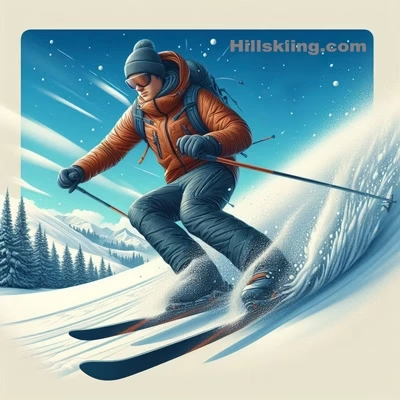
The Layering System: A Beginner’s Guide
The layering system is the foundation of any skiing outfit guide for first-timers. It consists of three main layers:
A. Base Layer: Worn closest to your skin, this layer manages moisture and keeps you dry.
B. Mid Layer: Provides insulation to keep you warm.
C. Outer Layer: Protects you from wind, snow, and rain.
A. Base Layer: The Foundation of Your Skiing Outfit
The base layer serves as the first and most essential part of your skiing outfit, playing a crucial role in maintaining warmth and comfort. It is designed to wick sweat away from your skin, preventing moisture buildup that can make you feel cold and damp. Whether you’re skiing in mild or extreme weather conditions, the base layer helps regulate your body temperature and ensures you stay dry throughout your adventure. If you’re a beginner wondering what to wear under ski pants, your base layer is the starting point. Choosing the right material and fit can significantly impact your overall skiing experience.
What to Look for in a Base Layer
When selecting a base layer, consider the following key factors to ensure optimal performance:
1. Material: The fabric of your base layer determines its effectiveness in moisture management and insulation. The best options include:
- Merino Wool – Naturally moisture-wicking, odor-resistant, and highly insulating, making it ideal for all-day comfort.
- Synthetic Fabrics (Polyester/Nylon) – Lightweight, quick-drying, and excellent at wicking sweat, making them a budget-friendly and durable choice.
- Silk Blends – Soft, lightweight, and breathable, providing additional warmth while feeling smooth against the skin.
💡 Avoid Cotton: Cotton absorbs moisture rather than wicking it away, leading to a wet and chilly experience on the slopes.
2. Fit: A snug but not overly tight base layer is essential for effective moisture-wicking and insulation. A well-fitted layer allows for proper movement while ensuring sweat is efficiently pulled away from the skin. Loose-fitting layers may create gaps where cold air can seep in, reducing warmth.
3. Weight: Base layers come in different weights, each suited for varying weather conditions:
Lightweight: Best for mild conditions or high-intensity skiing where overheating is a concern.
Mid-weight: Offers a balance between warmth and breathability, ideal for general skiing conditions.
Heavyweight: Designed for extremely cold climates, providing maximum insulation and warmth.
Best Skiing Outfit Base Layers for Skiing Beginners
If you’re just starting, investing in a high-quality base layer will enhance your comfort and performance. Here are some excellent choices for first-time skiers:
✔ Merino Wool Tops and Bottoms – Great for insulation, moisture control, and all-day comfort.
✔ Synthetic Thermal Sets – Budget-friendly, durable, and ideal for wicking sweat in various conditions.
✔ Silk Blends – Lightweight and breathable, perfect for those who want extra warmth without bulk.
By choosing the right base layer, you’ll create a solid foundation for your skiing outfit, ensuring warmth, dryness, and an overall enjoyable experience on the slopes.
B. Mid Layer Skiing Outfits: Staying Warm on the Slopes
The mid layer plays a crucial role in keeping you warm by trapping body heat, making it an essential component of your ski outfit. While your base layer keeps you dry, the mid layer provides insulation, ensuring you stay comfortable in freezing temperatures. When considering how to dress for skiing in cold weather, this layer is your best defense against the chill.
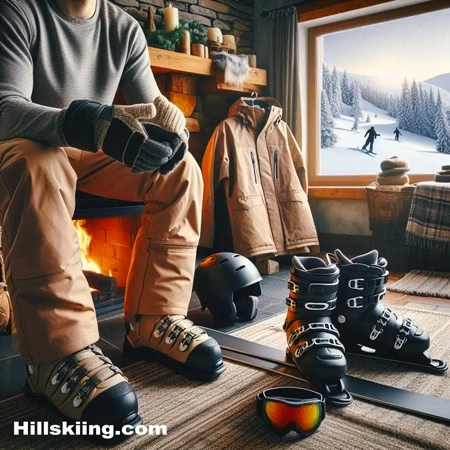
What to Look for in a Mid Layer Skiing Outfit
To choose the right mid layer, keep the following factors in mind:
- Material: The fabric of your mid layer determines how effectively it retains heat. Popular options include:
- Fleece – Lightweight, breathable, and quick-drying, making it a great all-around choice.
- Down Insulation – Offers superior warmth-to-weight ratio but can lose insulation properties when wet.
- Synthetic Insulation – Mimics down but retains warmth even when damp, making it ideal for snowy conditions.
- Wool Sweaters – Naturally warm and breathable, though slightly heavier than fleece or synthetic options.
- Weight: Selecting the appropriate mid-layer weight depends on the weather conditions:
- Lightweight Fleece: Perfect for mild days or high-intensity skiing.
- Midweight Insulation: Offers a balance of warmth and breathability for typical skiing conditions.
- Heavyweight Down Jacket: Best for extremely cold weather or when skiing in high-altitude regions.
- Breathability: A good mid layer should not trap excessive moisture. Breathable materials allow sweat to escape, preventing overheating and ensuring comfort throughout your ski session.
Best mid Layers Skiing Outfit
If you’re new to skiing, consider these tried-and-tested mid-layer options:
✔ Fleece Jackets or Pullovers – Lightweight and breathable, ideal for most conditions.
✔ Down or Synthetic Insulated Vests – Great for adding warmth without restricting arm movement.
✔ Wool Sweaters – Classic, warm, and naturally moisture-resistant.
🔥 Pro Tip: Layer for Flexibility!
Instead of wearing one bulky mid layer, opt for multiple thinner layers that you can adjust throughout the day. This approach allows you to add warmth when needed and remove layers if you start to overheat, giving you better temperature control and overall comfort on the slopes.
C. Outer Layer Skiing Outfits
The outer layer serves as your first line of defense against harsh weather conditions on the slopes. Whether you’re dealing with strong winds, heavy snowfall, or unexpected rain, this skiing outfit layer is crucial for keeping you dry, warm, and protected. Without a high-quality outer layer, even the best base and mid-layers won’t be as effective. For beginners, investing in a reliable waterproof ski jacket and pants ensures maximum comfort and protection throughout your skiing experience.
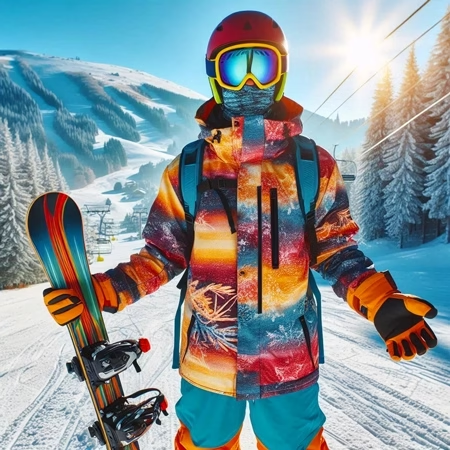
What to Look for in an Outer Layer Skiing Outfit?
When choosing an outer layer, consider these key features to stay warm and dry in any skiing conditions:
Waterproofing: A good ski jacket and pants must be waterproof to prevent moisture from seeping through. Look for a waterproof rating of at least 10,000mm (higher ratings offer better protection in heavy snowfall or wet conditions). Jackets with sealed seams and DWR (Durable Water Repellent) coatings provide additional defense against moisture.
Breathability: While waterproofing is essential, so is breathability. Without proper ventilation, sweat can accumulate inside your clothing, making you feel damp and uncomfortable. Choose jackets and pants with breathable membranes, such as GORE-TEX, eVent, or similar technologies, to wick moisture away while keeping external moisture out.
Functional Features: A well-designed outer layer should include features that enhance performance and convenience on the slopes:
- Adjustable Hoods – Protects your head and face from wind and snow.
- Pit Zips (Underarm Ventilation) – Helps regulate body temperature by allowing excess heat to escape.
- Snow Skirts & Gaiters – Prevent snow from getting inside your jacket and pants, keeping you dry.
- Reinforced Knees & Seat – Adds durability to withstand falls and rough terrain.
Best Outer Layers for Skiing Beginners
If you’re new to skiing, these options provide the best balance of protection, flexibility, and comfort:
✔ Waterproof Ski Jackets with Insulation – Ideal for beginners who want warmth and protection in one layer.
✔ Shell Jackets (Non-Insulated) – Provides layering flexibility, allowing you to adjust warmth based on conditions.
✔ Waterproof Ski Pants with Reinforced Knees & Seat – Ensures durability while keeping you dry during falls or wet snow.
🎿 Pro Tip: Invest in Quality Over Style!
While stylish skiing outfits, ski jackets may look great, functionality should always come first. A high-quality waterproof and breathable outer layer will keep you comfortable in all weather conditions, allowing you to focus on skiing rather than dealing with discomfort from being wet or cold.
Essential Ski Accessories for Beginners
Beyond the three primary layers, accessories play a crucial role in keeping you warm, dry, and comfortable while skiing. These additional items enhance your experience by providing extra insulation, protection, and convenience.
Here’s a beginner-friendly skiing gear checklist to ensure you hit the slopes fully prepared.
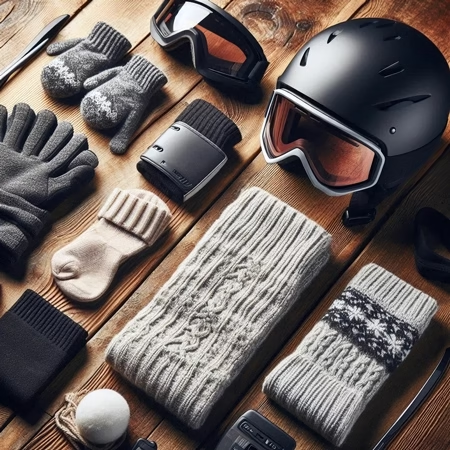
1. Ski Gloves or Mittens – Keep Your Hands Warm and Dry
Your hands are one of the first areas to feel the cold, making insulated, waterproof ski gloves or mittens a must-have. Look for gloves with:
✔ Waterproofing – Ensures hands stay dry in snow and wet conditions.
✔ Insulation – Keeps fingers warm in freezing temperatures.
✔ Wrist Straps – Prevents gloves from getting lost on the slopes.
💡 Mittens vs. Gloves: Mittens provide better warmth by keeping fingers together, while gloves offer more dexterity for adjusting gear. Choose based on personal preference and weather conditions.
2. Ski Socks – Comfort Starts with Your Feet
Regular socks won’t cut it for skiing. The best ski socks for beginners are made from moisture-wicking and insulating materials like:
✔ Merino Wool – Naturally warm, breathable, and moisture-resistant.
✔ Synthetic Blends (Polyester/Nylon) – Durable, quick-drying, and offers great insulation.
💡 Avoid cotton socks! Cotton absorbs moisture, leading to cold and damp feet, increasing the risk of blisters and discomfort.
3. Neck Gaiter or Balaclava – Protection from the Cold
When skiing in cold or windy conditions, exposed skin can suffer from windburn or frostbite. A neck gaiter or balaclava shields your face, neck, and ears, keeping you warm and protected from harsh elements.
✔ Fleece or Wool Neck Gaiter – Provides warmth while being breathable.
✔ Balaclava – Covers the entire face and neck, great for extreme cold.
4. Helmet and Goggles – Safety First
Protecting your head and eyes is non-negotiable when skiing. A properly fitted helmet and goggles enhance both safety and performance.
✔ Ski Helmet – Prevents head injuries while keeping you warm. Look for adjustable vents for temperature control.
✔ Ski Goggles – Improves visibility by reducing glare and protecting against wind and snow. Choose lenses suitable for varying light conditions.
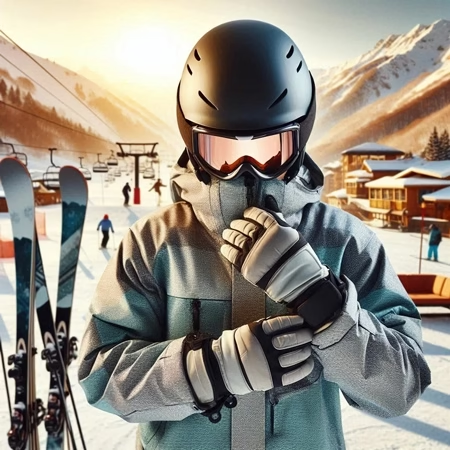
💡 Ensure a snug fit! Your goggles should work seamlessly with your helmet to avoid gaps where cold air or snow can enter.
5. Hand and Toe Warmers – Extra Warmth for Freezing Days
For added insulation, especially in sub-zero temperatures, hand and toe warmers can make a huge difference. These disposable heat packs provide several hours of warmth, ensuring your fingers and toes stay comfortable.
✔ Great for extremely cold days or if you have poor circulation.
✔ Easily fit inside gloves, mittens, or ski boots for extra heat.
🎿 Pro Tip: Pack Extras!
When heading out for a full ski day, always bring an extra pair of gloves, socks, and a spare neck gaiter in case they get wet. Keeping backups in your ski bag ensures you stay warm and dry no matter what!
How to Choose the Right Skiing Outfits on a Budget?
Skiing is often seen as an expensive sport, but that doesn’t mean you have to spend a fortune on gear. With a little planning and smart shopping, you can find affordable skiing outfits for beginners that keeps you warm, dry, and comfortable without breaking the bank. Here are some cost-effective ways to gear up for the slopes:
- Rent Gear to Save Money
If you’re new to skiing, renting ski clothing and gear is a great way to cut costs while you decide whether to invest in your own equipment. Many ski resorts offer rental packages that include:
✔ Waterproof ski jackets and pants
✔ Ski boots and poles
✔ Helmets and goggles
💡 Pro Tip: Call ahead and check rental prices—some resorts even offer beginner discounts!
- Shop during the Off-Season
One of the best ways to score discounts on skiing outfit is to shop during the off-season (spring and summer) when retailers clear out last season’s inventory. Look for:
✔ End-of-season sales at outdoor gear stores
✔ Discounts on ski clothing from major brands
✔ Clearance deals on past-year models of ski jackets, pants, and base layers
💡 Pro Tip: Sign up for newsletters from outdoor brands and retailers to get notified about sales and exclusive discounts.
- Buy Secondhand or Discounted Gear
High-quality ski gear lasts for years, making gently used secondhand gear a great budget-friendly option. Check out:
✔ Thrift stores and consignment shops
✔ Online marketplaces like eBay, Facebook Marketplace, or local ski swap events
✔ Discount outdoor retailers or outlet stores for last-season’s styles
Pro Tip: Always check for wear and tear before purchasing secondhand gear, especially for waterproofing and insulation quality.
- Prioritize the Essentials
If you’re buying new, focus on key items that provide the most protection and go for budget-friendly options on secondary layers. Here’s where to spend vs. save:
✔ Invest in: A waterproof jacket and pants—these are essential for staying dry.
✔ Save on: Base layers, mid-layers, and accessories—you can find affordable synthetic thermal tops and fleece layers at general outdoor stores.
🎿 Pro Tip: Layer Smartly!
You don’t need expensive ski-specific clothing—affordable thermal layers, fleece hoodies, and waterproof hiking gear can work just as well. Focus on staying warm and dry rather than buying brand-name ski apparel!
Common Mistakes Skiers Make When Dressing for Skiing
Dressing appropriately for skiing is crucial for staying warm, dry, and comfortable on the slopes. However, many beginners unknowingly make mistakes that can lead to discomfort or even safety risks. If you’re wondering what to wear skiing for the first time, be sure to avoid these common pitfalls:
- Wearing Cotton – The Biggest Mistake
Cotton may seem warm at first, but it’s one of the worst materials for skiing because:
✔ It absorbs moisture, meaning sweat and snow will leave you feeling cold and damp.
✔ It takes a long time to dry, making it unsuitable for prolonged outdoor exposure.
✅ Better Alternative: Choose moisture-wicking fabrics like merino wool or synthetic materials (polyester, nylon) for base layers.
- Overdressing – More Isn’t Always Better
Many first-time skiers layer up too much, thinking they need extreme insulation. However, excessive layers can:
✔ Cause overheating when skiing actively.
✔ Lead to excessive sweating, which can make you feel colder when moisture isn’t properly wicked away.
✅ Better Alternative: Stick to the layering system—a breathable base layer, an insulating mid-layer, and a waterproof outer layer.
- Ignoring Accessories – Small Items, Big Impact
Ski jackets and pants aren’t the only essentials—neglecting the right accessories can ruin your experience. Missing out on:
✔ Ski gloves or mittens leads to freezing hands.
✔ Thermal ski socks can prevent cold, damp feet.
✔ Ski goggles protect against glare, wind, and snow blindness.
✅ Better Alternative: Invest in quality gloves, socks, and goggles to enhance comfort and protection.
- Skipping the Outer Layer – A Risky Choice
Even if the weather looks sunny, skiing conditions can change rapidly. Many beginners underestimate:
✔ Cold winds at high altitudes.
✔ Sudden snowfall that can leave them soaked without a waterproof layer.
✅ Better Alternative: Always wear a windproof and waterproof ski jacket and pants—they keep you dry and protected, no matter the conditions.
🎿 Pro Tip: Balance Is Key!
Skiing is all about finding the right balance between warmth, breathability, and protection. Dress smartly, avoid cotton, and don’t forget accessories—this will ensure a comfortable and enjoyable experience on the slopes!
Tips for Staying Warm and Dry While Skiing
Skiing in cold, snowy conditions requires the right clothing and smart layering techniques to ensure maximum warmth and comfort. Whether you’re a first-timer or improving your skills, these layering tips for skiing beginners will help you stay warm, dry, and ready to enjoy the slopes all day long.
- Layer Up Strategically for Maximum Warmth
The key to staying warm is to layer your clothing correctly:
✔ Base Layer: Moisture-wicking fabric (merino wool or synthetic) to keep sweat away from your skin.
✔ Mid Layer: Insulating material (fleece, down, or synthetic insulation) to retain body heat.
✔ Outer Layer: Waterproof and windproof shell to protect against snow, wind, and moisture.
✅ Why It Works: This system traps heat while allowing moisture to escape, preventing you from getting too hot or too cold.
- Adjust Layers Based on Conditions
Skiing conditions can change throughout the day, so be ready to add or remove layers as needed:
✔ On warmer days, a lightweight mid-layer or shell jacket may be enough.
✔ In freezing temperatures, add an extra insulating layer to stay warm.
✔ Use zippered vents on jackets and pants to release excess heat without removing layers.
✅ Why It Works: Regulating your temperature prevents excessive sweating, which can make you feel colder later.
- Stay Dry by Controlling Sweat and Moisture
Sweat and damp clothing can quickly make you feel cold, so it’s important to manage moisture:
✔ Choose breathable fabrics that wick moisture away from your skin.
✔ Use pit zips and ventilation in jackets to allow airflow and prevent overheating.
✔ Avoid wearing cotton, as it traps moisture and takes a long time to dry.
✅ Why It Works: Dry clothing retains heat better, keeping you comfortable even in freezing conditions.
- Protect Extremities – Hands, Feet, and Head Matter
Your hands, feet, and head lose heat faster than the rest of your body, so keeping them warm is essential:
✔ Wear insulated, waterproof gloves or mittens to keep your hands dry.
✔ Choose moisture-wicking ski socks (merino wool or synthetic) to prevent cold, damp feet.
✔ Use a balaclava or neck gaiter to shield your face and neck from cold wind.
✔ Always wear a helmet for both safety and added warmth.
✅ Why It Works: Proper accessories help prevent frostbite and discomfort, keeping you on the slopes longer.
- Stay Hydrated – Warmth Starts from Within
Cold weather can trick you into thinking you’re not sweating, but dehydration can actually make you feel colder. To stay warm:
✔ Drink plenty of water or warm fluids throughout the day.
✔ Avoid too much caffeine or alcohol, as they can contribute to dehydration.
✔ Carry an insulated water bottle to prevent freezing.
✅ Why It Works: Proper hydration improves circulation, helping your body distribute heat more efficiently.
🎿 Pro Tip: Keep Moving!
Staying active on the slopes generates body heat, so don’t stand still for too long in cold conditions. If you start feeling cold, take a few quick runs or stretch to warm up before heading back up the lift!
Final Thoughts: What to Wear Skiing for Beginners
Dressing correctly for skiing is the difference between a fun, comfortable experience and a cold, miserable day on the slopes. While it may seem overwhelming at first, choosing the right skiing outfit is simple when you follow the layering system and select high-performance materials.
By following this beginner skiing outfit guide, you’ll be well-equipped to handle the cold, wind, and snow while maintaining warmth and dryness. The key takeaways to remember are:
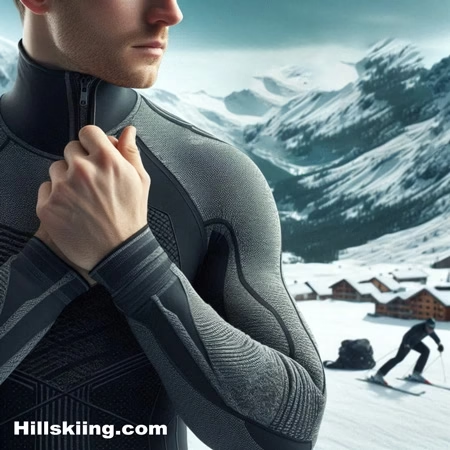
✔ Layer Effectively – Use a moisture-wicking base layer, an insulating mid layer, and a waterproof outer layer.
✔ Choose the Right Materials – Avoid cotton and opt for merino wool, fleece, down, or synthetic fabrics to stay dry and warm.
✔ Invest in Essential Accessories – Quality gloves, socks, a helmet, and goggles make all the difference in your comfort and protection.
Whether you’re skiing for the first time or planning a winter getaway, being properly dressed ensures you stay safe, warm, and ready to enjoy the adventure. With the right clothing and preparation, you’ll be able to focus on the thrill of skiing—without worrying about the cold!
🎿 Pro Tip: Always Check the Weather!
Before heading to the slopes, check the forecast and adjust your layers accordingly. Dressing smartly for the conditions will keep you comfortable all day long. By incorporating these tips and focusing on what to wear skiing for beginners, you’ll be ready to tackle the slopes with confidence. Happy skiing!
Watch a Video – How to Layer Skiing Outfit
FAQs: What to Wear Skiing?
What should a beginner wear for skiing?
A beginner should wear a three-layer system:
- Base Layer: Moisture-wicking fabric (merino wool or synthetic) to keep sweat away.
- Mid Layer: Insulating fleece or down to retain body heat.
- Outer Layer: Waterproof and windproof jacket and pants for protection against snow and wind.
Additionally, wear waterproof gloves, ski socks, a helmet, goggles, and a neck gaiter for added warmth and safety.
Can I wear jeans or cotton leggings for skiing?
No, jeans and cotton leggings are not suitable for skiing. Cotton absorbs moisture and dries slowly, making you cold and uncomfortable. Instead, wear thermal base layers made of synthetic or merino wool materials.
Do I need a waterproof jacket for skiing?
Yes, a waterproof ski jacket is essential to keep you dry and protect against snow, wind, and wet conditions. Look for a jacket with at least a 10,000mm waterproof rating and good breathability.
Should I rent or buy ski clothing as a beginner?
If you’re skiing for the first time, you can rent ski clothing (jackets, pants, and gloves) at some ski resorts. However, investing in your own base layers, mid layers, and accessories ensures proper fit, comfort, and long-term savings.
How do I stay warm while skiing in extremely cold weather?
- Wear mid-weight or heavyweight base layers for extra insulation.
- Add an extra fleece or insulated mid-layer.
- Use hand and toe warmers for added warmth.
- Cover your face with a balaclava or neck gaiter.
- Keep moving to maintain body heat.

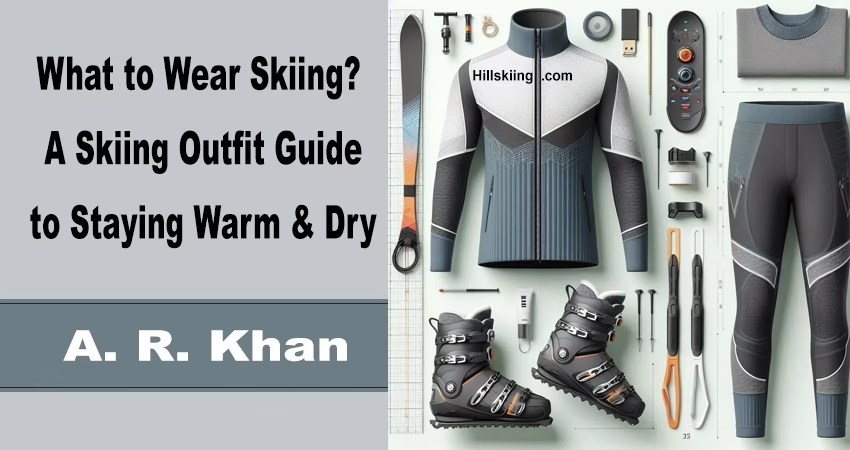


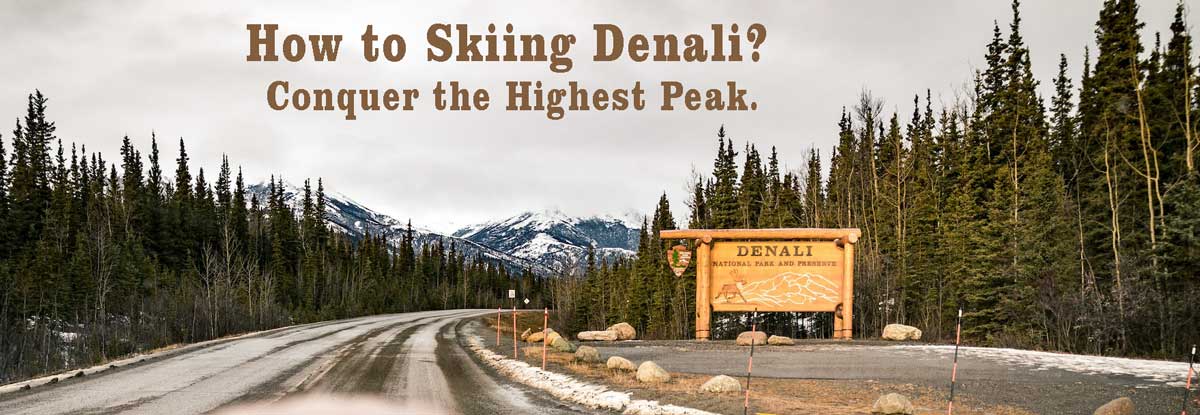

Trackbacks/Pingbacks